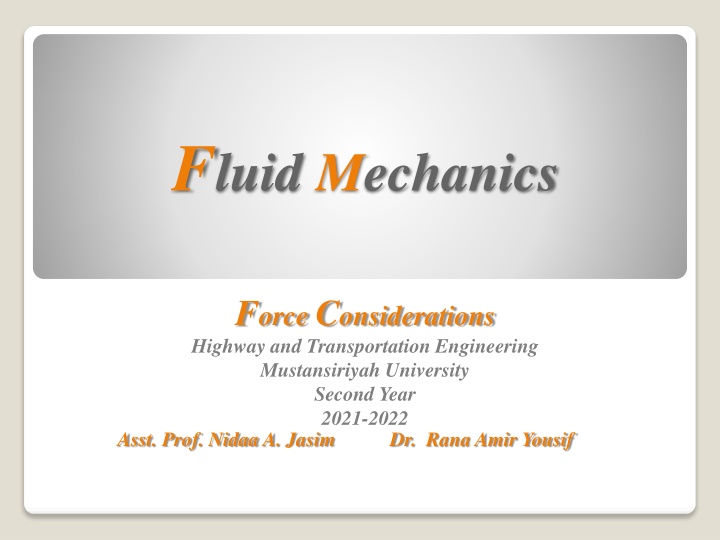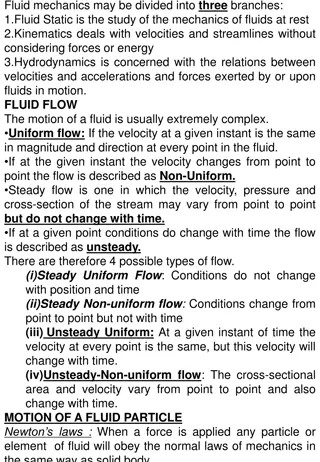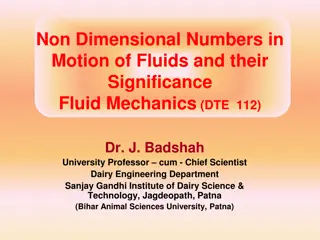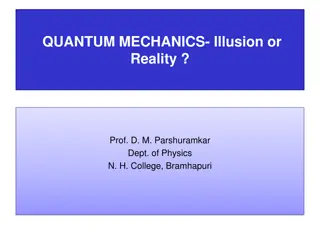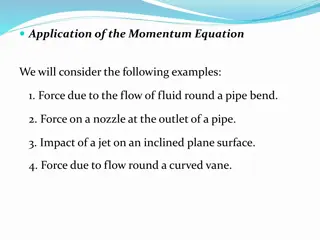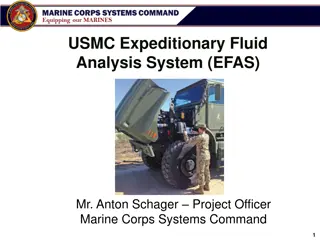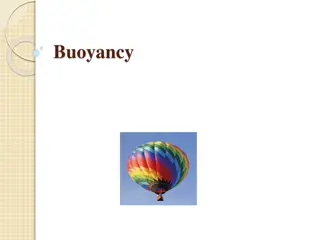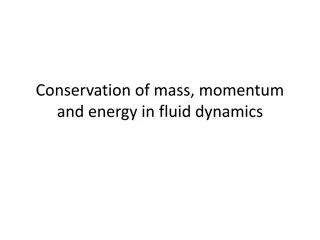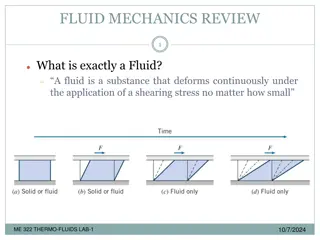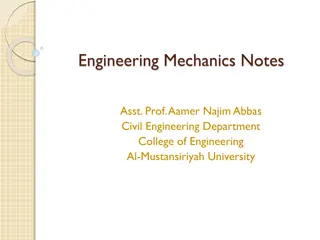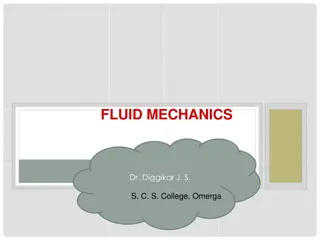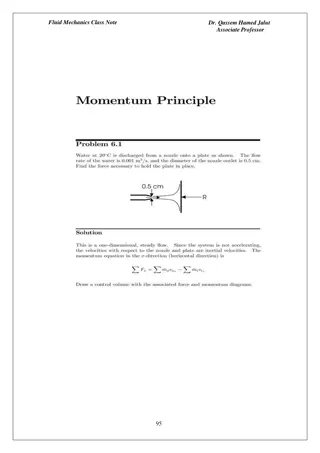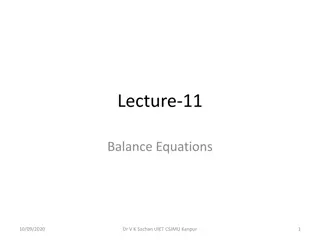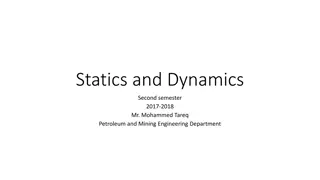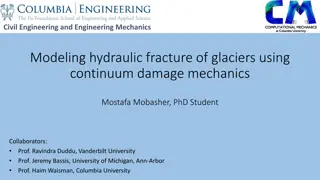Fluid Mechanics Force Considerations in Transportation Engineering
Force considerations in fluid mechanics as applied to submerged bodies in static fluids, including calculations for horizontal, vertical, and inclined plane surfaces. Learn how to determine resultant forces and points of application through practical examples.
Download Presentation

Please find below an Image/Link to download the presentation.
The content on the website is provided AS IS for your information and personal use only. It may not be sold, licensed, or shared on other websites without obtaining consent from the author.If you encounter any issues during the download, it is possible that the publisher has removed the file from their server.
You are allowed to download the files provided on this website for personal or commercial use, subject to the condition that they are used lawfully. All files are the property of their respective owners.
The content on the website is provided AS IS for your information and personal use only. It may not be sold, licensed, or shared on other websites without obtaining consent from the author.
E N D
Presentation Transcript
Fluid Mechanics Force Considerations Highway and Transportation Engineering Mustansiriyah University Second Year 2021-2022 Asst. Prof. Nidaa A. Jasim Dr. Rana Amir Yousif
Force Considerations When a body is submerged in a static fluid the fluid pushes on all of the body with pressure . The pressure force acting on the surface of a submerged body determine whether the body will sink or float. Horizontal Plane Surfaces Submerged InLiquids All points on a horizontal plane surface have the same elevation.(fig.1). So, the pressure is constant : P= H So F=PA F= *V Fig.1
Force Considerations Submerged Vertical Plane Surfaces Fig. shows two views end and right views for a gate as a thin rectangular plate submerged (fig.2): dF=P(dA)= h(dA) ?? Fr= ?? ?? = ??(? ??) ? ?? ??+?? So Fr= ((( ))( ?? ?? ?) ? Fr = hA Center of Pressure: ?? ??+? hcp= from which hcp-h=e (eccentricity) Ix (moment of inertia about the x- axis) Fig.2
Force Considerations Submerged Inclined Plane Surfaces The following three equations employed for inclined plane surfaces: FR= PA = h A FR = y A sin Ycp =?? + ? ?? Fig.3
Example 1 Calculate the magnitude and point of application of the resultant force exerted on the square gate (fig.4)? Fr = PA = hA = 62.4*(5+2.5)(5*5) =11700 lb hcp = ?? Ix = ?? 3 52.1 7.5 25+ 7.5 = 7.78?? ?+ 12=52.1 ft4 hcp= Fig.4
Example 2 A rectangular gate of dimensions 6 ft high and 4 ft wide is mounted in a vertical wall of an open rectangular tank(fig.5) the tank is filled with oil . Determine the minimum force Q to keep the gate closed if the gate is hinged at the bottom? Foil = h A = 57*7*24 = 9580 lb Hcp= ?? =4 6 3/12 7 24 M hinge =0 Foil(10-hcp) - Q*6=0 Q = 4100lb. ?+ + 7 = 7.43 ?? Fig.5
Example 3 Find the minimum high h of water that will cause the rectangular L-shape gate (fig.6)to open . The gate is hinged where the vertical rectangular section and the horizontal section are connected, thus the L-shape gate is free to rotate. The gate has a constant width W is exposed to the atmosphere (neglect the weight of the gate)? Fh= h Av = ? ? ?? ? ? ?? ?? ? ? ?? ? ?? +? hcp= ? =2/3h ? ??+ ? = So y=h/3 ft. Fv= h AH= h(3*W) = 3 hW Fv is act at the center of the section thus X=3/2 ft M hinge=0 Fh(Y) Fv(X) =0 ? 2 ? 3 2 Fig.6 2=0 h=5.2ft 3? ?3
Example 4 Determine the force acting on the circular gate located in the inclined wall of the open tank (fig.7)the gate diameter is 2 ft ? Fr= h A =62.4*(5+1*sin 45)*? ycp= ??? 45=5.71/sin45=8.08ft Ix=?? 4 A=?? 2 0.785 8.08 3.14+ 8.08=8.111 ft. 442= 1120?? ?? ??? ?+ ?? Ycp= 64= 0.785 ?? 4 4=3.14 ft2 Ycp= Fig.7
